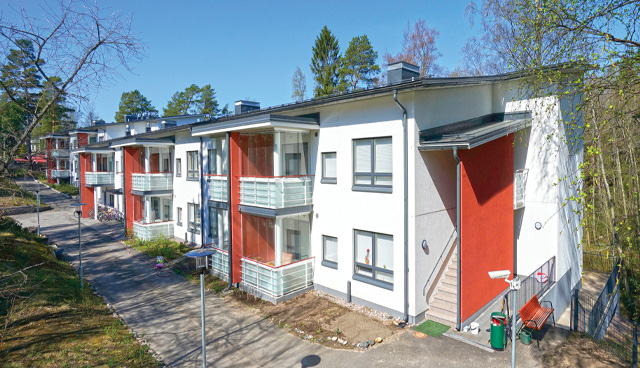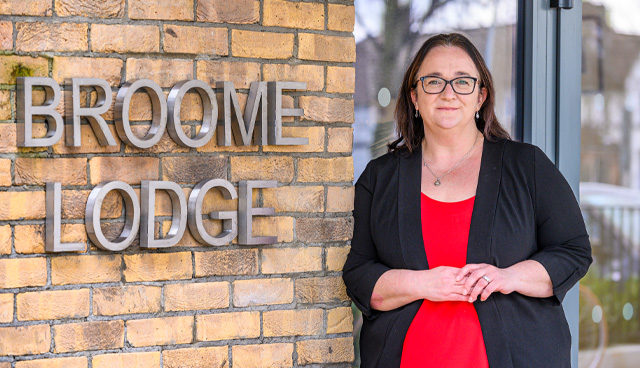
Supporting the post-Covid recovery: Building more homes for more people
1st June 2021
Circle VHA: Seeing the opportunities
1st June 2021Housing first: Eradicating homelessness

Saija Turunen. Credit: Juha Kahila.
The Y-Foundation’s Saija Turunen discusses how a housing first approach in Finland has seen the country close in on its ambitions to eradicate homelessness by 2027.
Highlighting that Finland is currently the only EU country where the number of homelessness people is on the decline, Turunen points to a dedicated and sustained focus to addressing homelessness in Finland which has seen an almost 80 per cent decrease in homelessness numbers over the past 35 years.
Turunen is a Research Manager at Finland’s Y-Foundation, set up in 1985 as a response to a serious housing shortage in the country. The organisation now owns over 17,000 apartments in over 50 cities and municipalities in Finland, making it Finland’s fourth largest landlord, and was a leading developer of the housing first principle.
Turunen confirms that the Y-Foundation’s latest 2020-2030 strategy aligns with the Government’s ambition to halve homeless numbers in Finland by 2023 and totally eradicate homelessness by 2027.
This ambition is realistic when considering the steady progress Finland has been making, not least in reducing homelessness numbers from 20,000 in 1985 to 4,341 in 2020. Of those 4,341 homeless people, only 1,054 are classed as ‘long-term’ homeless. Interestingly, the number of families experiencing homelessness in Finland has fallen by 85 per cent since 1987, down to 201 families in 2020.
“The situation has not always been brilliant and clearly it is not a quick fix,” explains Turunen. “You are talking about very persistent and committed work over 35 years to get to where we are today and still there is a lot of work to be done.”
Key to success to date is the inclusion of the housing first principle in the national strategy since 2008.
“Everything we do in Finland is about housing first,” she states.
The Research Manager points to research which suggests the economic benefit of this approach, with savings in emergency healthcare, social services and the justice system totalling around €15,000 annually for every homeless person in properly supported housing.
Additionally, research for housing first units suggests that residents’ use of health, social and police services decrease by 34 per cent.
However, she is quick to point out that the benefits to a housing first approach should not be measured in monetary value alone, with immeasurable benefits occurring for individuals, families, and society as a result.
Housing first
Setting out that housing first is not simply a principle in Finland but also an operating model, Turunen points to two cornerstones of this model. The first is housing as a human right and the second is the provision of support if needed. Additionally, a third critical element of success in Finland is the provision that housing solutions are delivered where others are living.
“All the work done for homeless people starts from the assumption that the first support measure should be the provision of housing. The work can be organised using different models and by providing different kinds of housing, but housing is always the top priority,” she says.
Adding: “In the housing first model, a dwelling is not a reward that a homeless person receives once their life is back on track. Instead, a dwelling is the foundation on which the rest of life is put back together. When a person has a roof securely over their head it is easier for them to focus on solving their other problems.”
Reiterating that the reduction in homelessness in Finland has been a centrally led process, over many decades, Turunen highlights the various iterations of national policy which began in 2008 with a recognition that more affordable housing was needed in the market. The construction and purchasing of new, affordable housing was one of the most important goals of the Finnish National Programme (PAAVO 1, 2008–2011). Both PAAVO 1 and PAAVO 2 (2012–2015), the nation’s second programme for government, focused on tackling long-term homelessness and saw a large conversion of shelters to permanent housing solutions.
Highlighting the State’s strength of conviction to ending homelessness, Turunen flags that commitment towards reducing homelessness remained a priority throughout the economic recession which began in 2008, even as cuts were made to many other public services.
Finland’s third national strategy from 2016–2019 took a greater focus on homelessness prevention and the current programme 2020–2022 has evolved further, decentralising a lot of responsibility to local levels within cities.
“Critical to the success of these successive strategies has been the continued political will and commitment to eradicating homelessness,” explains Turunen.
Halving homelessness
The importance of measurable quantitative goals is highlighted by Turunen, who points to a cooperation programme within the national strategy to eradicate homelessness by 2027 which aims to halve homelessness by 2023. Key elements of the plan include city-specific plans for the 11 cities with the largest homelessness numbers, increased social housing share within new housing areas from 25 per cent to 30 per cent (rising to 35 per cent post-2023), impact investing, a move to make housing advisory services statutory and the development of new low threshold services and forms of support in scattered housing.
“To end homelessness, we need a systemic change. To change the system of homelessness policy and services we need an adequate and accessible social housing supply, universal access to welfare; a prevention first approach and a transition from emergency and temporary accommodation to permanent housing with housing first.”
These plans build on the successes to date, the main elements of which have been systemic change from temporary accommodation solutions to the delivery of permanent homes, the role of housing advisors in preventing evictions and the inclusion of experienced experts in planning.
Interestingly, the Y-Foundation is not solely focused on eradicating homelessness in Finland but also reducing it internationally. In this context, Turunen points to the importance, in a global context, of adopting the critical elements of:
- housing first as a mainstream policy;
- offering alternative housing solutions and tailor-made support;
- offering permanent housing solutions;
- ensuring social housing is affordable;
- utilising Finland’s general housing benefit; and
- implementation through partnerships, in a timely manner and with concrete goals.
“To end homelessness, we need a systemic change. To change the system of homelessness policy and services we need an adequate and accessible social housing supply, universal access to welfare; a prevention first approach; and a transition from emergency and temporary accommodation to permanent housing with housing first,” she says.
Challenges
However, the Research Manager is aware that challenges exist to progress in reducing homelessness. She identifies complacency of progress as a leading challenge but adds that even with success has come a recognition that a greater number of people now need a wider network of supports in the context if the pandemic and potential economic impacts.
Looking specifically at Finland, Turunen says that intensive case management (ICM) has not always been intensive enough and there is a recognised lack of integration between basic health and social services. This, for example, has led to insufficient availability for drug users.
Finally, Turunen states that as is common in other areas of Europe, the ‘not in my back yard’ way of thinking is still persistent in some parts, particularly affluent, parts of Finland. This has not been helped by an uneven development of housing first thinking and practice across various stakeholders.








